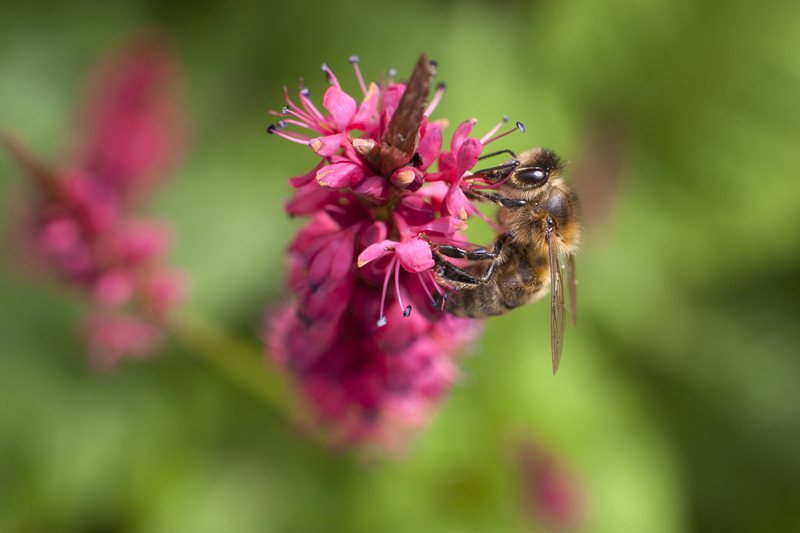Effective Strategies to Prevent Summer Drought Stress on Your Lawn
The heat of summer can be unforgiving on your lawn, often leading to dull, brown patches and weak grass--a condition commonly known as summer drought stress. By adopting the right lawn care techniques, you can keep your lawn healthy, lush, and green even during the hottest months. In this comprehensive guide, we'll explore the best strategies for preventing drought stress and maintaining a vibrant, thriving yard all summer long.
Understanding Summer Drought Stress on Lawns
Drought stress occurs when your grass does not receive enough water to support its growth and physiological processes. High temperatures, extended dry periods, and strong sunlight accelerate moisture loss, making it difficult for lawns to stay hydrated. Grasses stop growing, turn brown, and may even die if drought conditions persist.
Causes of Lawn Drought Stress
- Insufficient rainfall or irrigation
- High temperatures and intense sunlight
- Poor soil structure or compaction that inhibits water penetration
- Shallow root systems that can't access deeper moisture
- Improper mowing or fertilization
Understanding these causes is the first step towards building an effective prevention plan for your lawn.

The Importance of Proactive Lawn Care During Summer
Prevention is always better than cure. By implementing proactive lawn care techniques before drought symptoms appear, you ensure your turf remains resilient against the harshness of summer weather. Well-planned lawn maintenance not only prevents drought damage but also improves your lawn's vigor and overall appearance year-round.
Top Strategies to Prevent Summer Drought Stress on Your Lawn
Below, we've outlined the most effective methods to protect your lawn from drought, maximize water efficiency, and encourage robust, drought-resilient growth.
1. Choose the Right Grass Variety
Grass selection is crucial for drought tolerance. Cool-season grasses like Kentucky bluegrass or perennial ryegrass are popular in northern areas but tend to struggle in extreme summer heat. Warm-season grasses--such as Bermuda, Zoysia, and Buffalo grass--are naturally more drought-resistant and can thrive with less water.
- Bermuda grass: Excellent heat and drought tolerance, ideal for southern lawns.
- Zoysia grass: Maintains green color with less water, dense growth helps retain soil moisture.
- Buffalo grass: Native option, very low water needs.
Selecting an appropriate grass type for your climate is a proactive step toward minimizing drought stress.
2. Maintain Proper Mowing Practices
Mowing your lawn correctly during summer makes a significant impact on its drought resilience. Here's how to adjust your mowing habits to prevent moisture loss:
- Raise your mowing height: Taller grass shades the soil, reducing evaporation and encouraging deeper roots. Set your mower blades higher during hot months--aim for 3 to 4 inches for most grass types.
- Never cut more than one-third of the blade: Cutting too much at once weakens the grass and exposes soil.
- Keep blades sharp: Dull blades tear grass, causing stress and increasing water demand.
Consistent, smart mowing is essential for strengthening your lawn's drought tolerance this summer.
3. Water Wisely and Efficiently
Watering is a critical factor in preventing drought stress, but more is not always better! How and when you water can make all the difference:
- Water deeply and infrequently: This encourages deep root growth, making grass less reliant on surface moisture. Aim for 1 to 1.5 inches of water per week, provided in one or two sessions rather than daily sprinklings.
- Time it right: Water early in the morning when temperatures are cooler and winds are calm to reduce evaporation.
- Use efficient irrigation systems: Consider using drip hoses, smart sprinklers, or weather-based irrigation controllers to optimize water use.
- Avoid overwatering: Too much water can promote disease and shallow rooting.
Smart watering strategies conserve water and strengthen your lawn's natural defenses against summer drought.
4. Encourage Deep Root Growth
Lawns with deep, extensive root systems handle drought far better. Foster root development by:
- Aerating the soil: Compacted soils hinder root penetration and water movement. Core aeration allows air, water, and nutrients to reach the root zone more effectively.
- Topdressing with organic matter: Compost or well-rotted manure can enhance soil structure and water retention.
- Practicing correct watering and mowing: Deep, infrequent watering and higher mowing heights reinforce deeper roots.
Healthier roots mean a stronger lawn, less vulnerable to the stresses of summer heat and drought.
5. Improve Soil Health and Water Retention
Soil quality has a direct impact on your lawn's drought tolerance. Steps to improve soil health include:
- Regular soil testing: Assess pH and nutrient levels. Amend as needed to create optimal growing conditions.
- Adding organic amendments: Mulch, compost, and biochar increase moisture-holding capacity and promote beneficial microbes.
- Correcting compaction: Aerate and avoid heavy foot traffic, particularly when soil is wet.
Well-balanced, moisture-retentive soil gives grass a critical edge during periods of drought.
6. Fertilize Responsibly
Over-fertilizing during summer can increase drought stress. Instead:
- Fertilize in spring and fall: These seasons are best for feeding cool-season grasses. Minimal or no fertilization is needed in summer.
- Choose slow-release products: They prevent rapid, stress-inducing growth and provide sustained nutrition.
- Follow recommended rates: Avoid applying more than necessary, as excess fertilizer can actually weaken drought tolerance.
Feeding your lawn wisely helps maintain vigor without encouraging soft, thirsty growth during the hot season.
7. Utilize Mulching for Moisture Conservation
Mulching can make a remarkable difference in water conservation and soil temperature control:
- Leave grass clippings on the lawn: They act as a natural mulch, returning nutrients and reducing evaporation.
- Apply organic mulches in garden beds and around trees: Bark, wood chips, or straw lock in moisture and reduce the water competition for your lawn.
Mulching is a simple yet powerful tool for preventing summer drought stress on your turf.
8. Reduce Lawn Traffic
Minimize foot and equipment traffic on your lawn during drought conditions, as stressed grass is less able to recover from damage. Heavy use--pets, play, mowing--can bruise or compact summer-stressed turf, exacerbating drought impacts.
9. Use Shade and Wind Breaks
Strategically placed shade trees, shrubs, or fencing can protect your lawn from intense sun and hot winds, slowing evaporation and heat buildup. These landscape features reduce overall water requirement and keep lawn areas greener longer.
10. Recognize When to Let Lawn Go Dormant
Certain grass species, especially cool-season varieties, naturally go dormant during severe drought or intense heat. Allowing dormancy protects the crown and roots, which will regrow when cooler, wetter conditions return. Don't try to force green growth through overwatering or fertilizing; instead, lightly water just enough (about once every 3 weeks) to preserve the crowns.
Signs and Symptoms of Summer Drought Stress on Lawns
Spotting the early signs of drought stress can help you take quick action. Watch for:
- Grass turning bluish-grey or dull green
- Footprints or mower tracks remaining visible (grass blades don't bounce back)
- Patchy browning or thinning areas
- Curling or folding grass blades
Take action as soon as these symptoms appear to avoid permanent lawn damage.

Frequently Asked Questions about Preventing Lawn Drought Stress
How often should I water my lawn in summer to prevent drought?
As a general rule, water deeply once or twice per week, allowing the soil to dry slightly between sessions. Adjust for rainfall, soil type, and grass species.
Is it okay to fertilize grass during a summer drought?
It's better to hold off on fertilizing during severe summer stress. Fertilize primarily in the spring and fall for cool-season grasses, and early summer and late spring for warm-season types.
What is the best mowing height to prevent lawn drought stress?
Mow high! Raising the blade to 3 or even 4 inches allows grass to shade soil, preserve moisture, and develop deeper roots.
How do I know if my lawn is dormant or dead?
Dormant lawns will appear uniformly brown but the crowns (root base) will remain alive. Dig up a small section--if the roots are white and turgid, your lawn is dormant, not dead.
Conclusion: Protecting Your Lawn from Summer Drought Stress
With a combination of appropriate grass selection, solid cultural practices, smart watering, and soil improvement, you can dramatically improve your lawn's drought resilience. Remember to mow high, water efficiently, boost soil health, mulch, encourage deep roots, and avoid excessive fertility during times of heat and drought.
Don't wait for drought symptoms to appear. Take proactive steps using these effective strategies to prevent summer drought stress, and you'll enjoy a greener, healthier, and more beautiful lawn all season long.
Ready to transform your summer lawn care routine? Apply these expert-backed tips and watch your turf thrive--even during the hottest, driest months of the year!